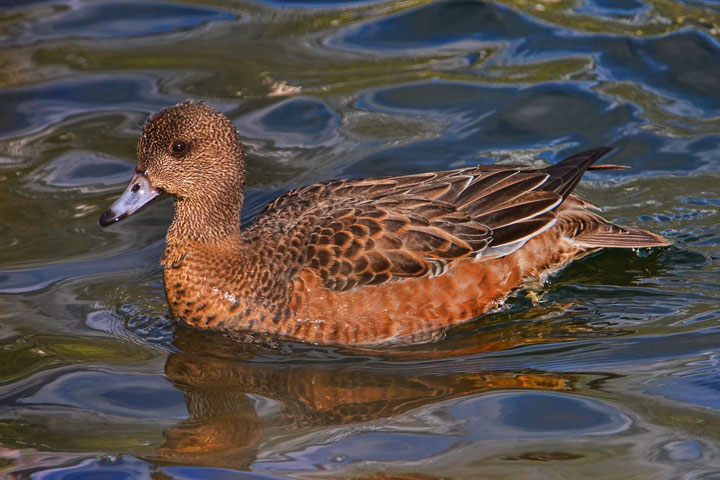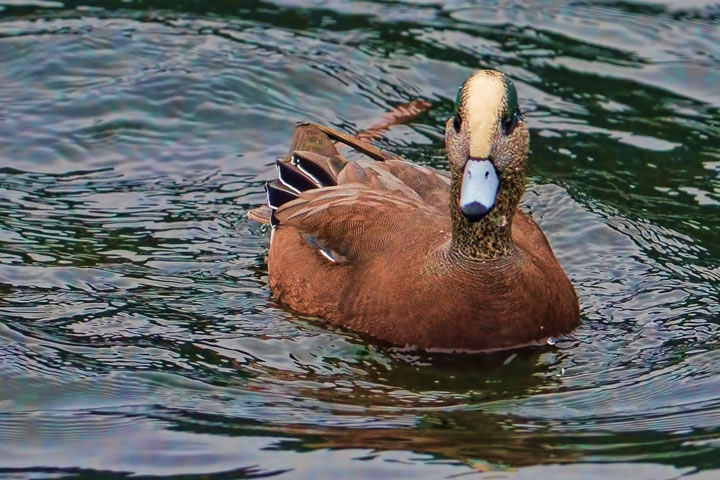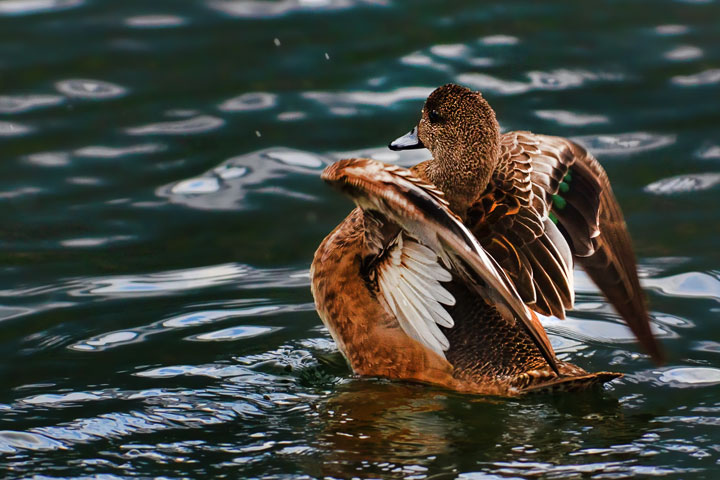Wigeons begin to pair bond in the winter and some along Nelson’s waterfront are already travelling in pairs and exchanging endearments.
Endearments? What form might those take among ducks? A common one seems to be wing-flapping. This is a form of ritualized display between waterfowl. It is unrelated to preening or the drying of feathers. It is typically used within couples. These three pictures show the female, the male, and then the female displaying.
The female wigeon is swimming.

The male wigeon is swimming.

The female wigeon rears up in the water, flaps her wings and displays the normally hidden white feathers underneath. It is as if she were saying: “Hi honey.”

I saw a bird the size of a duck on the lake with very white markings on the face and on the breast and to the sides. The back of his body and head was very black. It dipped and dived into the water for food. The mate which swam near by was a less distinct brownish colour. Can you tell me what this is by my description?
Grace, it might have been a goldeneye, either a Common Goldeneye or a Barrow’s Goldeneye. You can see pictures of each on my website at, http://kootenay-lake.ca/birds/swimmers/divers/index.html . In each case, the female is mainly a drabber brown.
Beautiful series. I’ve become quite fond of a large wigeon flock that congregates not too far from my home. Last year, they had a single Eurasian Wigeon among them. This year, no Eurasian yet, but the flock has been split between the pond and its foraging activities in Puget Sound. It’s possible I just haven’t seen Mr. Eurasian yet. I hope he made it back down the flyway.
Ingrid, your comments prompted me to review the appearance of the Eurasian Wigeon just so I would recognize it if it visited. No, I haven’t seen one yet.